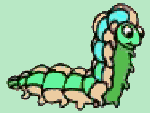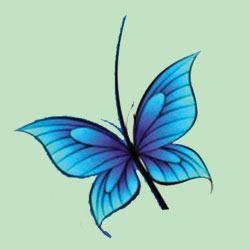Expressive Therapies (Emotional Release counseling)
The philosophy of expressive therapies includes:
- an experiential and personal journey approach to counselling,
- a holistic perspective that can address personal, relational, communal and global issues,
- incorporate mind, body and spiritual dimensions of a client's issues,
- honour both biographical and transpersonal levels,
- include conscious and unconscious dynamics in exploring life issues.
Modalities employed by this approach include: bodywork, as well as dance and movement; meditation; expressive and integrative artwork, journaling; Dream work, Symbol work, Sand play; Breath work; Process work; and Gestalt voice dialogue.
Expressive Therapies are a coordinated collection of personal growth methods developed in Australia since 1980. It is based on the research and writings of several of the Twentieth Century pioneers in human development and psychology. Methods and approaches are drawn from the work of Stanislav Grof M.D., Fritz Perls, C.G. Jung, Dora Kalff, Arthur Janov, Drs. John Pierrakos and Alexander Lowen and others.
The counselling approaches were
first developed in
The main principle that unites the Expressive Therapies approaches is that we all have an inbuilt movement in our psyche towards healing and wholeness. The Expressive Therapies methods aim to encourage and co-operate with this natural impulse. We each have an ‘inner healer’, so our therapeutic and self-discovery work supports the wisdom of this part to come forward and direct our healing journey. Expressive Therapy allows for deep healing by involving
· the mind,
· the body
· and the emotions,
· in a context of respect for each individual’s spiritual nature.
Examples of some of the therapeutic options offered
SANDPLAY & SYMBOL WORK
The method of Sandplay used has been developed
from the background of Margaret Lowenfeld’s play
therapy in
 |
 |
| Sandplay | Symbol Work |
EMOTIONAL RELEASE PROCESSING
 This method can help deal with
feelings that may be driving our behaviour. Through process work we can connect
with current feelings and work back through the past to old patterns at the
base of our behaviour. For most of us these imprints from the past contribute
strongly to sabotage in our current daily life. Emotional triggering methods can be used to release both conscious and
unconscious emotions. Process work provides a safe, structured way of
encountering our issues and supports the deep healing of anger, grief, loss,
rage and resentment.
This method can help deal with
feelings that may be driving our behaviour. Through process work we can connect
with current feelings and work back through the past to old patterns at the
base of our behaviour. For most of us these imprints from the past contribute
strongly to sabotage in our current daily life. Emotional triggering methods can be used to release both conscious and
unconscious emotions. Process work provides a safe, structured way of
encountering our issues and supports the deep healing of anger, grief, loss,
rage and resentment.
DREAMWORK
 Dreams help us reintegrate disowned
parts of our personality. In working with dreams we can access inner wisdom and
resolve unconscious conflicts. We favour the Gestalt approach, and support
individuals in discovering their own meaning in dreams. Taking time to work on
a dream is a way of cooperating with your unconscious and speeding its healing
work.
Dreams help us reintegrate disowned
parts of our personality. In working with dreams we can access inner wisdom and
resolve unconscious conflicts. We favour the Gestalt approach, and support
individuals in discovering their own meaning in dreams. Taking time to work on
a dream is a way of cooperating with your unconscious and speeding its healing
work.
BIOENERGETICS and BODY FOCUS
 Bioenergetics are specific exercises that awaken the flow of emotions and energy within the body.
Held-in emotional pain is often felt as physical pain or tension. Unexpressed
love and generous impulses that have not flowed out harden and begin to feel
like their negative opposites. The body has many habits of physical holding and
muscular contraction. Under this is a healthy energy core. So freeing the body
is a vital aspect of connecting with our deeper self.
Bioenergetics are specific exercises that awaken the flow of emotions and energy within the body.
Held-in emotional pain is often felt as physical pain or tension. Unexpressed
love and generous impulses that have not flowed out harden and begin to feel
like their negative opposites. The body has many habits of physical holding and
muscular contraction. Under this is a healthy energy core. So freeing the body
is a vital aspect of connecting with our deeper self.
JOURNAL WRITING
 This gentle guided writing process
is another method of coming to greater self-awareness and clarifying our
direction in life. It is a skill we can use at any time or with a counsellor.
Journal writing can support the healing of memories from the past,
clarification of current issues and helps us reclaim creativity.
This gentle guided writing process
is another method of coming to greater self-awareness and clarifying our
direction in life. It is a skill we can use at any time or with a counsellor.
Journal writing can support the healing of memories from the past,
clarification of current issues and helps us reclaim creativity.
 INTEGRATION THROUGH ARTWORK
INTEGRATION THROUGH ARTWORK
Drawing supports completion, recording and integration. An individual’s artwork can be used as the basis for more open discussion and exploration or to provide a personal record of self-discovery. It also supports relaxation and closure after emotional release work.



